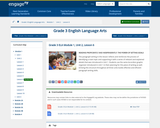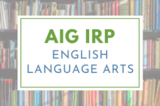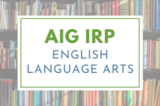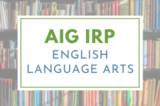
In this lesson, students document what they learn about a topic by sorting evidence into categories.
- Subject:
- English Language Arts
- Material Type:
- Lesson Plan
- Provider:
- EngageNY
- Date Added:
- 04/13/2017

In this lesson, students document what they learn about a topic by sorting evidence into categories.

Students will play the role of newspaper reporters in order to research, write, and publish an article about the history of the Star-Spangled Banner. This is connected with the Smithsonian Museum in Washington, DC.

This remix includes a Google Slide template created by Erin Wolfhope with view only rights. Please make a copy of it to edit, and remix and share changes.Enclosed is a powerpoint that includes task card questions and answer spaces for the story, The Crayon Man: The True Story of the Invention of Crayola Crayons, by Natascha Biebow. Students can choose one or more task cards to complete at their technology center. Students will enter their answers on the appropriate slide.

This activity for gifted learners might serve as a culminating activity as part of a larger unit on fables, folktales, & myths. Students will take part in close readings of a variety of stories throughout the unit (including fables, folktales, & myths). In this activity, gifted learners would work either individually or with a partner to closely read Amos & Boris by William Steig. They will then work to decipher the central message(s) of the story and what fable(s) this story can be connected to. As they read, they will pay special attention to two main details that help to convey the story: the word choice and illustrations. Using the central message of the story as an anchor and the saying, “A picture’s worth a thousand words,” they will then argue that the Steig’s word choice and illustration do or do not support the story’s central message in the best possible way by creating an audio/visual presentation that supports their argument. This lesson was developed by NCDPI as part of the Academically and/or Intellectually Gifted Instructional Resources Project. This lesson plan has been vetted at the state level for standards alignment, AIG focus, and content accuracy.

This writing activity for gifted learners might serve as a culminating activity or final assessment as part of a larger fiction-based genre study. Students will take part in close readings of a variety of fictional genres throughout the unit, such as parables, fables, folktales, fairy tales, myths, novels, and even poetry. In this activity, gifted learners would work independently to close read The 13 Clocks by James Thurber. They will work to decipher the story and it’s genre, analyzing major components of the story (such as a central message, characters, setting, and/or events in the story) and evaluating those components by the various genre criteria they learned about in class and through their own online research. This will culminate in an opinion piece arguing as to the genre of The 13 Clocks and potentially the creation of a new genre. This lesson was developed by NCDPI as part of the Academically and/or Intellectually Gifted Instructional Resources Project. This lesson plan has been vetted at the state level for standards alignment, AIG focus, and content accuracy.

This activity for gifted learners might serve as a culminating activity of part of a larger social studies unit or an English language arts unit centered on the concept of culture. Students will take part in close readings of a variety of fiction (folktales, myths, historical fiction, etc.) and non-fiction (informational books, reference books/materials, maps, magazines articles, original documents, websites, etc.) throughout the unit. As they read, they will pay attention to the different sections of the books (e.g., - nationalities, religions, languages, etc.) and take notes on what applies to them/where they fit in regard to that topic/category, thus comparing & contrasting where they stand when considering their place in America & their place in the world. They will then work to create a “self portrait” by crafting their research into a portrait that conveys who they are in America, in the world, and in their own head & heart and present that information to the class. This lesson was developed by NCDPI as part of the Academically and/or Intellectually Gifted Instructional Resources Project. This lesson plan has been vetted at the state level for standards alignment, AIG focus, and content accuracy.

Students will write instructions on how to make a banana split.